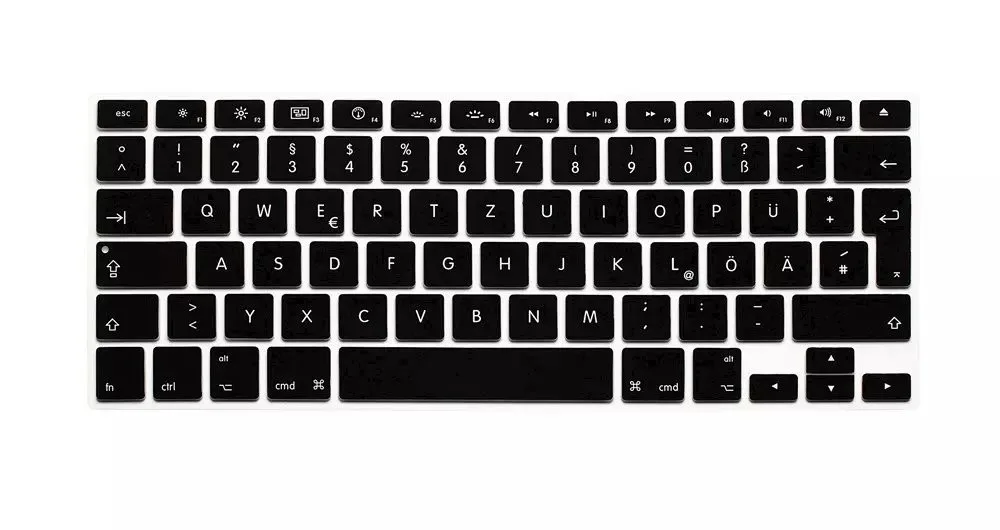

It is also possible to charge the MBP 14 via USB-C (up to 100 W). You really have to ask yourself why Apple ever removed the connector in the first place. The braided cable leaves a high quality impression and is sufficiently long at 2 meters. The MagSafe connector works as well as always and the small status LED shows if the battery is charging or full.

If you use docking stations, there still seems to be a bug in macOS that limits transfer rates to USB 3.0. We managed to record transfer rates of more than 2.5 GB/s with an external SSD.
#How much does a macbook pro cost in europe tv#
4K playback at 60 Hz worked well on a modern 55-inch OLED TV from LG and you can also activate HDR for the external screen. Video output worked well both via HDMI and Thunderbolt, but we did notice some minor performance issues via HDMI, but more on that later. If you get the MBP 14 with the M1 Pro, you can drive two external screens at up to 6K and 60Hz users of the MBP 14 with the M1 Max can attach two 6K screens (60 Hz) as well as another 4K display (60 Hz). All three USB-C ports support the latest Thunderbolt 4 standard including DisplayPort ALT mode. The latter is unfortunately limited to HDMI 2.0, so 4K displays are limited to 60 Hz (HDMI 2.1: 120 Hz or 60 Hz). It looks like Apple finally accepted that having only USB-C ports is not really the solution, because the new MacBook Pro 14 once again offers a MagSafe power connector, a full-size SD-card reader as well as an HDMI video output. Depending on your arm position you might also get imprints from the edge of the high base unit during typing, which can be uncomfortable. The maximum opening angle on the other hand is not very generous at 135 degrees. The central hinge is almost perfectly adjusted, because it keeps the display well in position (also at small angles) and avoids wobbling, but you can still comfortably open it with one hand. The slim lid is a little more flexible and you can provoke ripples on the screen with a lot of concentrated pressure, but you really have to try and it should not be an issue in practice. The display also offers more pixels (menu bar is basically put on top the actual 16:10 screen), but the notch just does not look very nice.īoth the stability as well as the build quality of the chassis are excellent there are no creaking sounds and you cannot dent the case anywhere. According to Apple, the notch helps to keep narrow bezels, which is a success (screen-to-body ratio: 88%). Once you turn the MacBook on, you will immediately notice the large notch in the upper center of the display. You now also get a stamped-in MacBook Pro lettering on the bottom panel.

This is definitely a matter of taste, but we preferred the spacing in the chassis color. In addition to the black keyboard, the spacing between the keys is now black as well. The basic design on the other hand did not change, and you still get a unibody aluminum chassis in silver or space grey. Despite the slightly bigger footprint compared to the MacBook Pro 13, the MacBook Pro 14 appears much more massive and denser. Contrary to recent MacBooks, the chassis is not tapered and the thickness is therefore pretty much the same around the chassis. When you pull out the new MacBook Pro 14, you will immediately notice the high weight and the bulky chassis for Apple standards. We want to find out what the new MBP 14 with the M1 Pro is capable of and if it can justify the price premium over the MacBook Pro 13 M1 or the MacBook Air M1, respectively. The 14.2-inch Mini-LED screen (Apple calls it Liquid Retina XDR Display) is another highlight and is supposed to be extremely bright. There is still no USB-A port, but you once again get a full-size SD-card reader as well as an HDMI output. The touch bar is gone and the minimalistic approach in terms of the ports seems to be a thing of the past as well. In addition to the new processor, Apple also goes back to some design elements of earlier MacBook Pro models. We ordered the entry-level spec of the new MacBook Pro 14 at launch, even though it is a bit tricky to talk about an entry-level SKU when it cost 2,249 Euros (~US$2,607). One year after the debut of Apple’s own M1 processor, the manufacturer from Cupertino now introduces the two faster chips M1 Pro as well as M1 Max alongside the two completely revamped MacBook Pro 14 and 16 laptops.


 0 kommentar(er)
0 kommentar(er)
